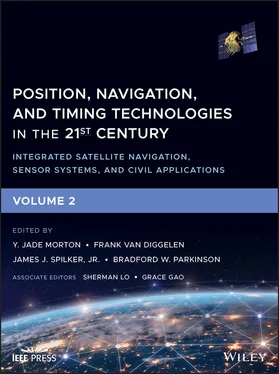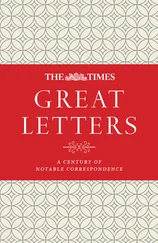9 Part F: Position, Navigation, and Timing for Consumer and Commercial Applications 55 GNSS Applications in Surveying and Mobile Mapping 55.1 Introduction 55.2 Surveying and Mobile Mapping Sector’s Positioning Requirements 55.3 GNSS Applications in Land and Marine Surveying 55.4 GNSS for Mobile Mapping 55.5 Emerging Developments in GNSS Systems and Mapping Industry References 56 Precision Agriculture 56.1 Precision Agriculture 56.2 GNSS Requirements for Agriculture 56.3 Conclusion 57 Wearables 57.1 Introduction 57.2 Origins of Wearables 57.3 The World of Wearables 57.4 Wearable Device Architecture 57.5 Sensors and Measurement 57.6 Power Management/Battery Monitoring 57.7 Screens 57.8 Video and Audio 57.9 Wireless Technology 57.10 Privacy and Security 57.11 The Future 57.12 Summary 58 Navigation in Advanced Driver Assistance Systems and Automated Driving 58.1 Introduction 58.2 Useful GNSS Measurements for Vehicle Automation 58.3 Vehicle Modeling 58.4 Applications References 59 Train Control and Rail Traffic Management Systems 59.1 The Role of GNSS in Modern Train Control Systems 59.2 Track‐Constrained PNT 59.3 GNSS and Odometer Fusion 59.4 Track‐Constrained Relative PVT Estimate 59.5 Multiple‐Track Discrimination 59.6 Track Detector Performance References 60 Commercial Unmanned Aircraft Systems (UAS) 60.1 UAS Context 60.2 Flight Guidance and Autonomy 60.3 Obstacle Avoidance: Environment 60.4 Obstacle Avoidance: Other Aerial Vehicles 60.5 Role of Navigation References 61 Navigation for Aviation 61.1 Introduction and Overview 61.2 Navigation for Aviation: Past and Present 61.3 Aviation Navigation for the 21st Century 61.4 Satellite Navigation 61.5 Terrestrial Radio Navigation Sources 61.6 Surveillance‐Based Navigation 61.7 Signals of Opportunity 61.8 Naturally Occurring Aviation Signal 61.9 Vision 61.10 Conclusions References 62 Orbit Determination with GNSS 62.1 Introduction 62.2 Formulation of the Orbit Determination Problem 62.3 The First Step in Solving the POD Problem: Linearization 62.4 Types of Orbit Determination Approaches: Kinematic, Dynamics, and “In Between,” Also Known as Reduced Dynamics 62.5 The Critical Role of the Reference GNSS Orbit and Clock States 62.6 POD Solution Validation 62.7 LEOs, MEOs, and HEOs 62.8 Formation Flying and Relative Positioning 62.9 Elements of the Art 62.10 Timing 62.11 Orbit Determination for Earth Science 62.12 Synergy with Other Data Types 62.13 Onboard Orbit Determination 62.14 Case Study: Jason‐3 Mission 63.3.4 Acknowledgments References 63 Satellite Formation Flying and Rendezvous 63.1 Introduction to Relative Navigation 63.2 Relative Orbit Determination 63.3 Mission Results 63.4 Conclusions References 64 Navigation in the Arctic 64.1 Introduction 64.2 Ice Navigation 64.3 21st Century Ice Navigation 64.4 GNSS Integrity in the Arctic 64.5 Conclusions References
10 Glossary, Definitions, and Notation ConventionsGlossary
11 Index
12 End User License Agreement
1 Chapter 35 Table 35.1 Sensors covered in Volume 2
2 Chapter 36 Table 36.1 Simulation parameters Table 36.2 Summary of filter classes
3 Chapter 38 Table 38.1 GPS versus cellular CDMA and LTE comparison Table 38.2 Typical h 0and h −2values for different OCXOs [36] Table 38.3 FIR of the pulse shaping filter used in cdma2000 [50] Table 38.4 LTE system bandwidths and number of subcarriers Table 38.5 Test dates, locations, and carrier frequencies Table 38.6 DOP values for M GPS SVs + N cellular towers Table 38.7 UAV’s RMSEs and final errors after 50 s of GPS cutoff
4 Chapter 39 Table 39.1 Comparison between GPS L1 C/A code and MBS 2 MHz signal Table 39.2 Telecom networks phase/frequency sync requirements
5 Chapter 40 Table 40.1 Geometry from a receiver at (0, 0, 0) to DTV transmitters
6 Chapter 41 Table 41.1 Phase code for master and secondary (“+” indicates 0 radians phase... Table 41.2 Electrical characteristics of well‐known Loran antennasTable 41.3 Loran‐C Performance Requirements [89]Table 41.4 eLoran aviation and maritime performance requirements
7 Chapter 42Table 42.1 Parameters for different INS Grades. All INS Grades use a time con...
8 Chapter 43aTable 43.1 Constellation comparison [4]Table 43.2 Comparison of LEO and MEO systems for navigationTable 43.3 Results of the Iridium‐based STL indoor testing in comparison to G...Table 43.4 Comparison of GPS and OneWeb user position accuracy from a global ...Table 43.5 Comparison of GPS atomic clocks and chip‐scale atomic clock perfor...Table 43.6 Comparison of SIS URE weight factors for the statistical contribut...Table 43.7 Comparison of root‐mean‐square orbit radial (R), along‐track (A), ...Table 43.8 Comparison of orbit determination methods
9 Chapter 43bTable 43.9 Existing and future LEO constellations: number of satellite and tr...Table 43.10 Starlink orbital configurationTable 43.11 RMSEs (in meters) from 100 Monte Carlo runs for varying number of...Table 43.12 Simulation results with Globalstar, Orbcomm, and Iridium LEO sate...Table 43.13 Simulation results with Starlink LEO satellites for a UAV navigat...Table 43.14 Experimental results with two Orbcomm LEO satellites for a ground...Table 43.15 Experimental results with two Orbcomm LEO satellites for a UAV na...
10 Chapter 44Table 44.1 Accelerometer and gyroscope representative performance for various...
11 Chapter 45Table 45.1 Key components of the MEMS manufacturing supply chain and the coun...Table 45.2 Comparison of major types of MEMS accelerometersTable 45.3 Comparison of major types of MEMS gyroscopesTable 45.4 Definition of different grades of gyroscope performance and their ...Table 45.5 Summary of the significant factors to evaluate and consider in sen...
12 Chapter 46aTable 46.1 GNSS versus INS: pros and consTable 46.2 Parameters of accelerometer bias models for different inertial sen...
13 Chapter 46bTable 46.3 Terms contributing to carrier‐phase difference residuals
14 Chapter 48Table 48.1 Measurement equation validationTable 48.2 Navigation accuracy results
15 Chapter 49Table 49.1 Laser‐based sensor taxonomyTable 49.2 Performance comparison of line extraction methods (based on [6])Table 49.3 Airborne laser‐scanner system (ALS)‐based terrain navigation for e...
16 Chapter 50Table 50.1 Common optical flow versus feature tracking characteristics
17 Chapter 51Table 51.1 Main differences between computer vision and digital photogrammetr...Table 51.2 Transformations between coordinate systemsTable 51.3 Problems in digital photogrammetryTable 51.4 Photogrammetric data acquisition system categories
18 Chapter 52Table 52.1 Key events contributing toward pulsar‐based navigation technology ...Table 52.2 Pulsar characteristics for three well‐studied sourcesTable 52.3 Variable celestial source attributes for navigation applications
19 Chapter 55Table 55.1 GNSS requirements in surveying applicationsTable 55.2 Technical specifications of the most recent survey‐grade GNSS rece...Table 55.3 Comparison between traditional and GNSS‐based machine guidance tec...Table 55.4 Statistical analysis of the bridge movementsTable 55.5 Primary and secondary functions of MMS sensorsTable 55.6 Definition of terms in expanded georeferencing equationTable 55.7 Quantitative performance evaluation of positioning solution of dif...Table 55.8 Quantitative performance evaluation of positioning solution of dif...Table 55.9 Payload characteristics/involved sensors of Leica Aibot X6 and Tri...
20 Chapter 56Table 56.1 GNSS Accuracy requirements for various field operationsTable 56.2 GNSS error sources, correctable and uncorrectable.Table 56.3 Satellite‐based correction services suitable for precision agricul...
21 Chapter 58Table 58.1 Statistics of the horizontal error for three lateral motion constr...Table 58.2 Navigation system benefits and limitations of common onboard senso...
Читать дальше











